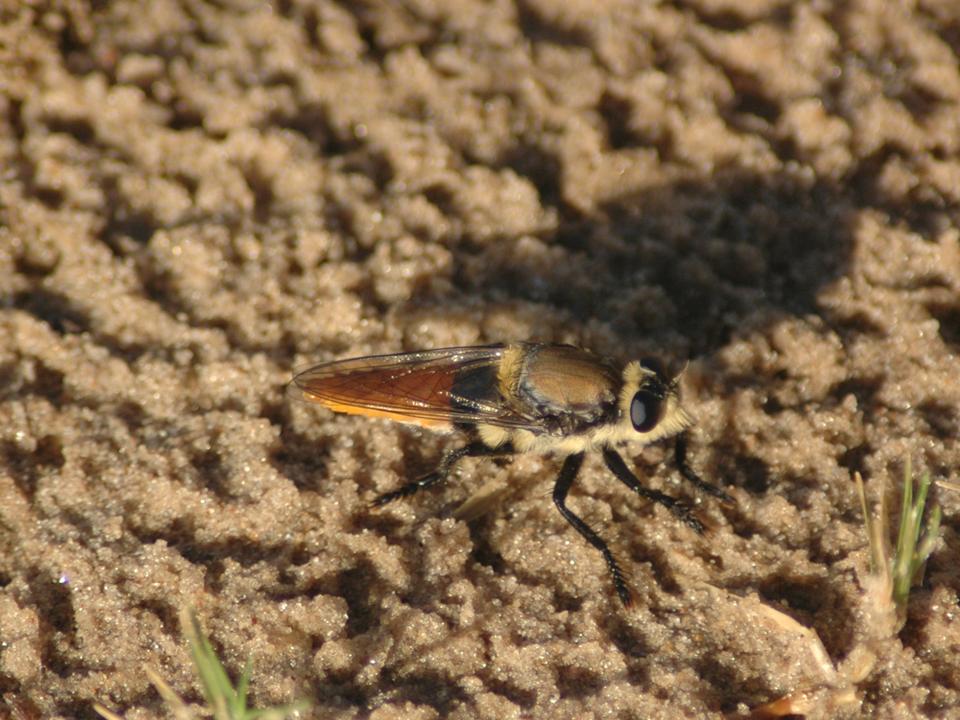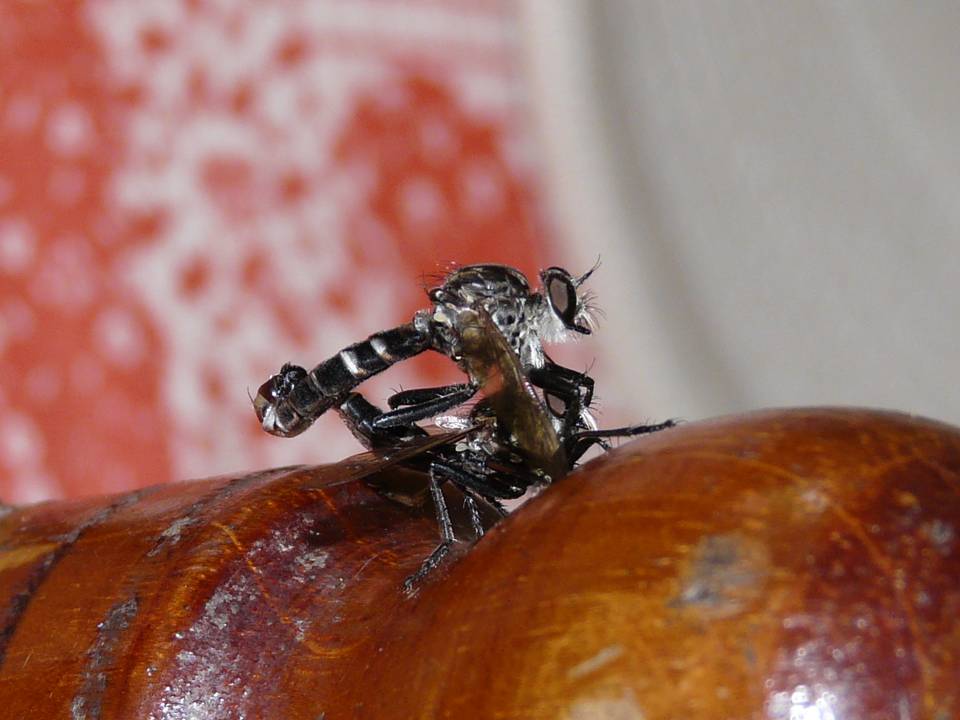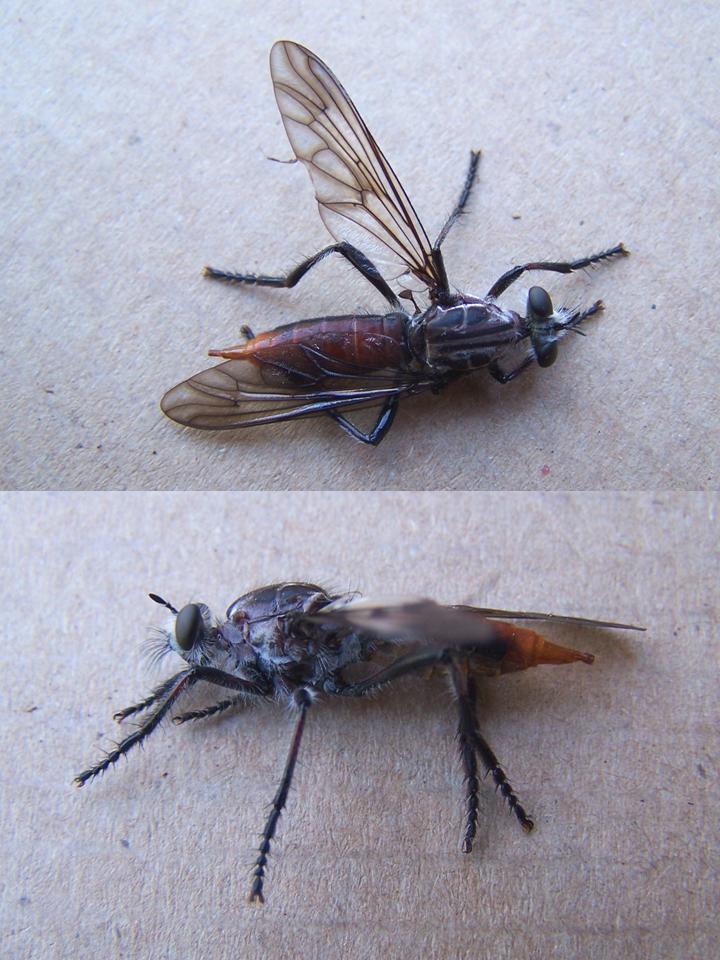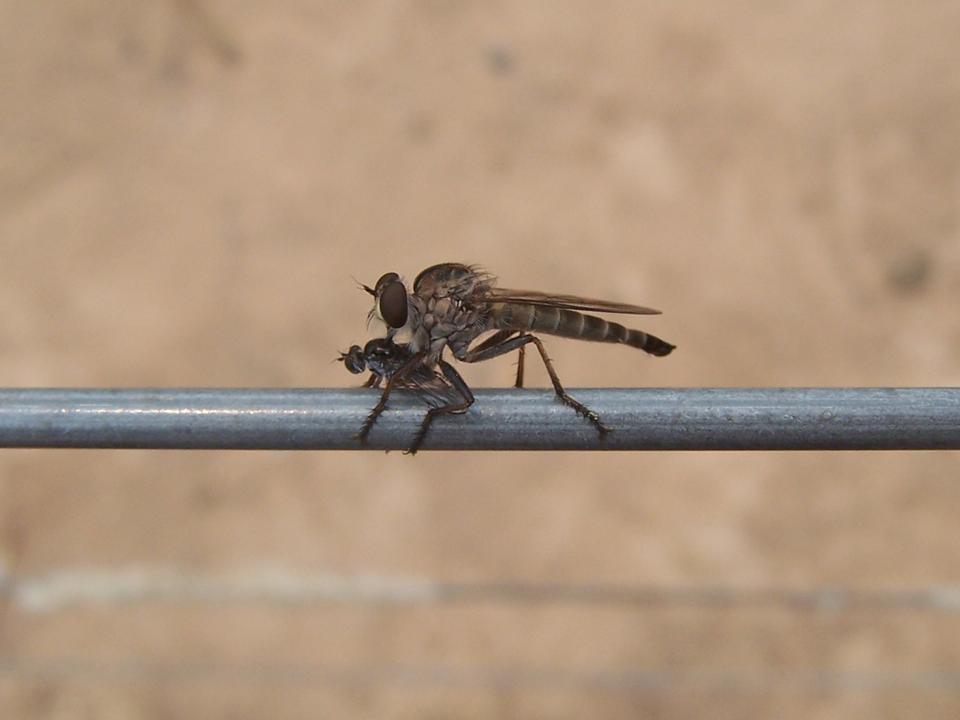

We are very grateful to Dr Sergio Ibañez-Bernal for the identification of the images
Designed by Paul Smith 2006. This website is copyrighted by law.
Material contained herewith may not be used without the prior written permission of FAUNA Paraguay.
Photographs on this page were taken by Paul Smith and Tietske Nieuborg and are used with their permission.
 | FIGURE 1 |
|
 | FIGURE 2 |
|
 | FIGURE 3 |
|
 | FIGURE 4 |
|
FIGURE 1 - Unidentified sp. - Yacyretá, Departamento Misiones (Teatske Nieuborg 2007).
FIGURE 2 - Unidentified sp. in copulus - Estancia Laguna Blanca, Departamento San Pedro (Paul Smith December 2009).
FIGURE 3 - Unidentified sp. - PROCOSARA, PN San Rafael (Paul Smith November 2007).
FIGURE 4 - Unidentified sp - Comunidad Salazar, km 340 Ruta Trans-Chaco (Paul Smith October 2007).
ASILIDAE - ROBBER FLIES
A distinctive family of large, robust flies with about 7100 species worldwide. Robber flies can be recognised by the bristly mystax giving them a bearded appearance and the three ocelli located between two large compound eyes. These are predatory species using the short, sharp proboscis to puncture prey and inject neurotoxic and proteolytic enzymes - the liquefied innards are then sucked up like a straw. The mystax protects the head from the defensive actions of their prey. Many species have a tapering abdomen, though some species are bulkier and mimic bees. Larvae may be laid on plants, in soil or in dung heaps and are typically omnivorous.
Click on the images to enlarge them.

